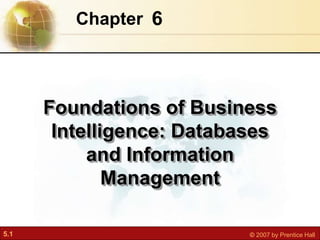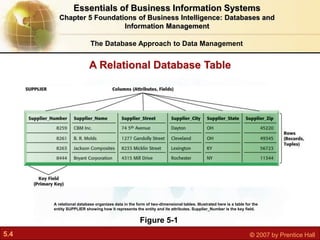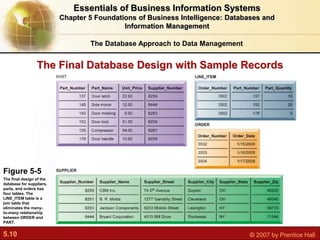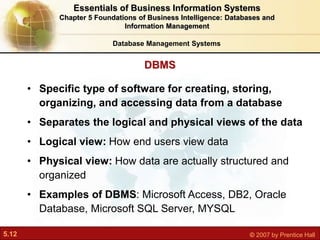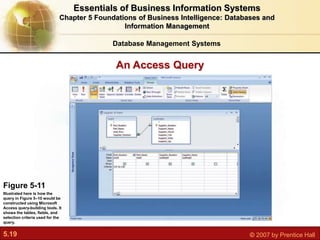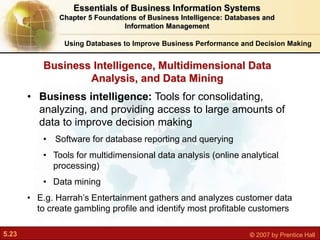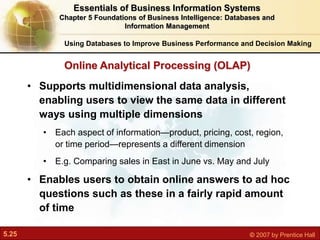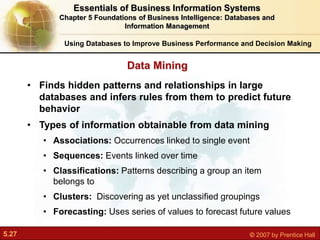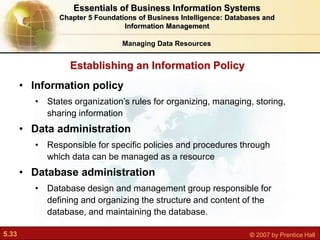The document discusses databases and database management. It describes how databases organize data into tables with rows and columns, and how different database tables can be linked together through primary and foreign keys. Relational database management systems (RDBMS) allow users to define relationships between tables and perform operations like selecting, projecting, and joining data across multiple tables. The document also covers how organizations can use databases, data warehouses, business intelligence tools, and data mining to gain insights from data and improve decision making.
